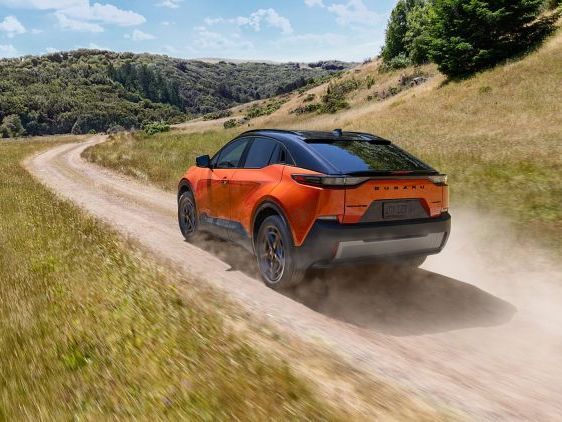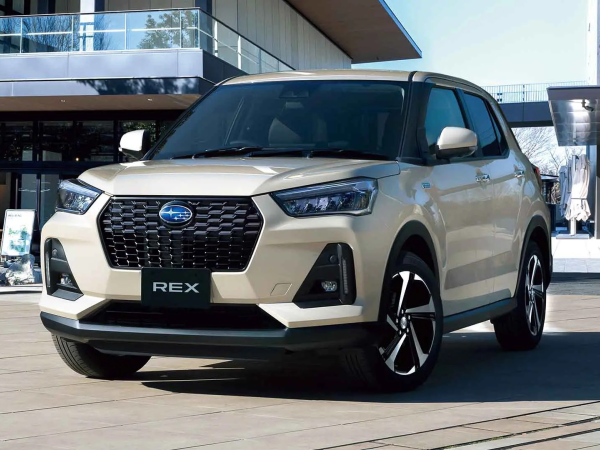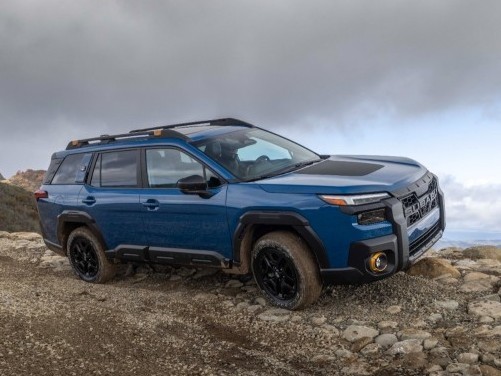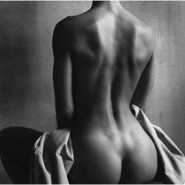Q
How much HP does a 2017 BRZ have?
The 2017 Subaru BRZ comes with a 2.0-liter naturally aspirated flat-four engine, cranking out 205 horsepower and 211 Nm of torque. You can pair that with either a 6-speed manual or 6-speed automatic gearbox. This car is a hit with driving enthusiasts, thanks to its sharp handling and rear-wheel-drive setup—seriously, it shines on Malaysia's mountain roads and race tracks.
The BRZ and Toyota 86 are sister cars, sharing most of their mechanical bits but with slight differences in tuning and styling. They’re perfect for folks who live for that pure driving thrill. Now, the naturally aspirated engine delivers linear power and quick response at high revs, but let’s be real, low-end torque is a bit lacking. That’s why a lot of owners end up modding theirs to squeeze out more performance.
In Malaysia, keeping a BRZ on the road and upgrading it is a breeze. There’s a solid network of specialist workshops offering tailored upgrades—think intake/exhaust tweaks or ECU remaps—to unlock even more of that sports car potential.
Special Disclaimer: This content is published by users and does not represent the views or position of PCauto.
Related Q&A
Q
Does the 2017 Subaru BRZ have a manual or automatic transmission?
The 2017 Subaru BRZ hits the Malaysian market with two transmission options to suit different driving styles: a 6-speed manual for those who crave that direct, hands-on control, and a 6-speed automatic that's more at home in stop-and-go city traffic or daily commutes. Under the hood, you've got a 2.0-liter flat-four engine pumping out 200 horsepower and 205 Nm of torque—smooth power delivery with sharp throttle response. Pair that with the rear-wheel-drive setup, and you're looking at a car that handles like a dream, perfect for drivers who live for the thrill of the road.
In Malaysia, the BRZ has built up a solid following among performance car enthusiasts, thanks to its unique driving dynamics and relatively accessible price tag. And let's not forget its modification potential—it's a favorite in the local tuning scene, with plenty of folks upgrading suspension, exhausts, and intakes to squeeze out even more fun. Whether you row your own gears with the manual or opt for the automatic, the 2017 BRZ delivers loads of driving enjoyment for Malaysian owners who want that sporty, engaging feel behind the wheel.
Q
What is the safety rating of the 2017 Subaru BRZ?
The 2017 Subaru BRZ scored well in several major safety evaluations. For instance, it earned the "Top Safety Pick" designation from the Insurance Institute for Highway Safety (IIHS), with strong performances in frontal crash, side crash, and roof strength tests. However, it only received an "Acceptable" rating for head restraint and seat safety.
For Malaysian buyers, while ASEAN NCAP hasn't specifically tested the 2017 BRZ, Subaru has always emphasized safety technology. The BRZ comes standard with essential safety features like multiple airbags, Vehicle Stability Control (VSC), and Anti-lock Braking System (ABS), which enhance everyday driving safety.
It's worth noting that as a rear-wheel-drive sports car, the BRZ's low center of gravity and precise handling can indirectly help reduce accident risks. That said, drivers still need to be mindful of a rear-drive car's dynamics on wet roads—moderating speed and steering inputs is key to staying safe.
If you're considering a used BRZ, it's advisable to check the service records and accident history to ensure all safety systems are functioning properly.
Q
Does the 2017 Subaru BRZ have a noise issue?
The 2017 Subaru BRZ doesn't typically have significant noise issues in everyday driving. But some owners might notice a bit more wind or road noise at highway speeds, that's not surprising considering its sporty setup and those slick frameless doors. They look awesome, sure, but they are not very effective in sound insulation. Still, overall, the noise levels are totally in line with expectations from a sports car in this class.
For Malaysian owners, the hot climate can make tires wear out a bit quicker. My tip? Keep an eye on your tire condition regularly and maybe replace them with a set that's better at reducing road noise – that'll have a significant impact. Also, don't neglect servicing those chassis bushings and suspension bits. The tropical rain and humidity around here can speed up rubber aging, and worn parts can start to produce abnormal noises before you know it.
If you do hear something weird, start by checking the exhaust system mounts or the driveshaft universal joints. Those can get a little loose after long - term use. And hey, remember that the BRZ's engine note is actually tuned – especially when you're revving it higher, you'll hear more intake noise in the cabin. That's deliberate, to make you feel more connected to the drive, not a mechanical problem.
If you're really after more peace and quiet, adding sound - deadening material in the trunk and wheel wells is a solid move. It's a pretty common modification here in Malaysia, and it's very effective.
Q
Is the 2017 Subaru BRZ reliable?
The 2017 Subaru BRZ holds up pretty well in terms of reliability. Under the hood, you've got that 2.0-liter flat-four FA20 engine – it delivers power smoothly with decent fuel economy, making it a solid fit for daily drives around Malaysia and the occasional mountain road blast. Thanks to that boxer engine's low center of gravity, the handling is sharp and engaging. A heads-up though: with these boxer engines, keeping an eye on the oil level becomes a bit more important as they rack up miles, just to avoid any potential lubrication hiccups down the line.
When it comes to the gearbox, both the 6-speed manual and 6-speed auto variants earn praise for their durability and crisp, smooth shifts. The chassis and suspension setup feel robust too, handling Malaysia's varied road conditions nicely. Now, since the BRZ sends power to the rear wheels, you'll want to be a touch more cautious when the roads are wet or slippery to prevent any unexpected slides.
Inside, the cabin materials prioritize functionality over flash, but the build quality is solid – you won't hear a lot of annoying rattles even after years of use. Maintenance costs land somewhere in the middle of the sports car spectrum, and sticking to regular servicing is a smart move to keep it running strong for the long haul. If you're after driving fun and don't mind a slightly firmer ride from the suspension, the 2017 BRZ is definitely one to consider.
Q
Is BRZ 2017 good for long drives?
The 2017 Subaru BRZ, as a rear-wheel-drive sports car, delivers a well-balanced performance for long drives in Malaysia. Its low center of gravity and boxer engine provide stable handling, making it a solid fit for smooth highways like the North-South Expressway. However, the firm suspension setup might take a toll on comfort when tackling some of Malaysia's older, rougher road surfaces. The 2.0L naturally aspirated engine offers linear power delivery, ideal for cruising, though its 6.9L/100km fuel consumption means you'll want to keep an eye on Malaysia's fluctuating petrol prices. The cabin, while cozy, can feel a bit tight for taller drivers on extended trips. A quick tip for our local climate: considering the factory cooling system upgrade kit is smart given Malaysia's heat. Also, with that rear-wheel-drive layout, extra caution is definitely advised during the rainy season. What's cool though is the BRZ's strong aftermarket support here – the local car community often shares suspension upgrade ideas specifically aimed at boosting long-distance comfort. If you're regularly hitting the roads for inter-state journeys, those proven setups are worth checking out to level up your drive.
Q
What is the fuel economy of the 2017 BRZ?
The 2017 Subaru BRZ delivers moderate fuel economy. Official figures put the manual transmission model at around 8.4 liters per 100 kilometers combined (that's roughly 12 km per liter), while the automatic is slightly better at approximately 7.8 liters per 100 km combined (about 13 km per liter). Of course, your actual mileage will vary depending on how you drive, the roads you're on, and how well you keep up with maintenance.
Under the hood, you've got a 2.0 - liter naturally aspirated flat - four engine. This car is not about achieving maximum fuel efficiency; it's all about the driving fun. So, those fuel numbers are pretty much in line with other performance - focused cars in its class.
For Malaysian buyers, the BRZ's fuel economy is generally acceptable for city commutes, but you'll want to be mindful of fuel costs during longer highway stints. Sticking to regular maintenance is a good idea to keep it running at its best and control fuel expenses.
If outright fuel efficiency is your top priority, you might want to look into a hybrid or turbocharged alternative. But the BRZ's highlight is its sharp handling and that sweet rear - wheel - drive thrill – it's well - suited for drivers who live for the experience behind the wheel.
Q
How fast does a Subaru BRZ go 0-60?
The Subaru BRZ clocks in at around 6.2 seconds for the 0-60 mph (roughly 0-97 km/h) sprint. That kind of pace comes courtesy of its 2.4-liter flat-four naturally aspirated engine, which cranks out 228 horsepower and 250 Nm of torque. Pair that with either a 6-speed manual or 6-speed automatic gearbox, and you get snappy throttle response and a nice, linear power delivery. For drivers here in Malaysia, the BRZ's rear-wheel-drive setup and low center of gravity really dial up the fun factor, making it a hoot on our twisty mountain roads or even at the track. Now, it's worth mentioning that real-world acceleration can vary a bit depending on road surface, tire choice, or how you're shifting, but the BRZ still stands out in its class for offering solid bang for your buck and a super engaging drive. If you're craving more performance, you could look into legally modifying the intake, exhaust, or swapping in some lighter components—just make sure you're keeping it in line with JPJ's regulations.
Q
What is the L 100km on a 2017 BRZ?
The fuel economy of the 2017 Subaru BRZ (measured in liters per 100 kilometers) varies depending on driving conditions and transmission type. Official figures put the manual transmission variant at approximately 8.4 L/100km combined, while the automatic version comes in at around 7.8 L/100km. This rear-wheel-drive sports car, powered by a 2.0-liter flat-four engine, strikes a nice balance between driving excitement and fuel efficiency. For Malaysian owners, it's worth noting that real-world fuel consumption can be affected by traffic congestion, driving habits, and fuel quality. We recommend using RON 95 or higher octane fuel to unlock its optimal performance. While sports cars like this do tend to drink a bit more than your average family sedan, the BRZ's key selling points lie in its precise handling and that perfect 50:50 weight distribution, which deliver an exceptional driving experience. And for daily maintenance, keeping an eye on tire pressure and engine condition will go a long way in helping maintain that fuel efficiency.
Q
How much does a 2017 BRZ weigh?
The 2017 Subaru BRZ's weight varies depending on the specific trim. The manual transmission models tip the scales at around 1,270 kg (curb weight), while the automatic versions are a bit heftier, coming in at approximately 1,290 kg. As a rear-wheel-drive sports car, that lightweight design really helps sharpen up the handling – it makes a noticeable difference when you're carving through Malaysia's twisty mountain roads or pushing it on a track, giving you that nimble, connected feel.
The BRZ shares its platform with the Toyota 86, and both cars prioritize a low center of gravity and balanced chassis – perfect for folks who live for driving thrills. Over here in Malaysia, with our hot climate, a lot of owners end up adding extra bits like body kits or upgraded cooling systems, which can add a tiny bit of weight. It's a good idea to keep an eye on your tires and suspension with regular checks to make sure everything's performing at its best.
Fuel economy on the BRZ isn't too shabby either, making it a solid pick for daily driving and weekend mountain runs. All in all, it's a pretty bang-for-your-buck entry-level sports car.
Q
What is the top speed of the 2017 Subaru BRZ?
The 2017 Subaru BRZ tops out at 210 km/h (around 130 mph). This rear-wheel-drive sportscar packs a 2.0-liter naturally aspirated flat-four engine, cranking out 200 horsepower and 205 Nm of torque. Paired with either a 6-speed manual or 6-speed automatic gearbox, its power delivery prioritizes linearity and driver engagement over outright top speed bragging rights.
Here in Malaysia, the BRZ's chassis setup and low center of gravity make it a riot on twisty mountain roads or track days. That flat-four engine's inherent balance also does wonders for cornering stability. It's worth noting, though, that real-world top speed can vary depending on local weather, road surfaces, or electronic limiter settings – always best to explore a car's limits on a closed circuit or track.
For those craving a bit more pep, some owners tweak the intake/exhaust or remap the ECU for small power gains. Just make sure any mods comply with JPJ regulations to avoid issues come inspection time or voiding your warranty.
Popular Cars
Model Year
Car Compare
Car Photo
Latest Q&A
Q
Is the 1.5 L 4 cylinder?
Yes, a 1.5L engine is typically a 4-cylinder setup—the most common configuration for small to mid-sized displacements. This layout strikes a solid balance between fuel efficiency and power output, making it ideal for daily commuting and family use. Four-cylinder engines are relatively simple in design, cheaper to maintain, and benefit from proven technology that delivers smooth operation. You'll find this configuration widely used by mainstream brands like Honda, Toyota, and Mazda. While there are some 1.5L 3-cylinder options out there, the 4-cylinder remains the go-to choice, especially in models prioritizing durability and refinement. If you're shopping for a 1.5L-powered car, pay attention to specific tech features—turbocharging, direct injection, etc.—as these can significantly impact real-world driving dynamics and fuel economy.
Q
What is the displacement of a V8 engine?
The displacement of a V8 engine typically ranges from 4.0 to 6.2 liters, depending on the vehicle and its purpose. For example, high-performance sports cars often pack a 5.0-liter or larger V8, while trucks and SUVs usually stick with something between 4.3 and 5.7 liters. Known for its brute power and smooth operation, the V8 is a go-to for acceleration and towing—though its thirst for fuel is something buyers always weigh up.
These days, turbocharging has changed the game. Smaller-displacement V8s (like a twin-turbo 4.0L) can now deliver big-block performance with slightly better efficiency. And let’s not forget the sound—few things beat the roar of a tuned V8 exhaust, a big reason why enthusiasts love ‘em.
If you’re into V8s, keep an eye on local used car listings or auto shows—you’ll often spot some gems there.
Q
What is the difference between 1l and 1.2 L engine?
The key difference between 1-liter (1L) and 1.2-liter (1.2L) engines comes down to displacement—the total volume of all cylinders in an engine, measured in liters. Generally, a larger displacement means more power and torque, so a 1.2L engine will likely feel stronger during acceleration, highway driving, or when tackling hills with a load. That said, it’ll also drink a bit more fuel compared to the 1L.
The 1L, being smaller, prioritizes fuel efficiency, making it a smart pick for city commuting or everyday runs. On the flip side, the 1.2L’s extra performance often means higher manufacturing costs, which might bump up the car’s price tag. Plus, the 1L’s compact size fits better in smaller or budget-friendly models.
Your choice really hinges on driving needs: go for the 1.2L if you regularly hit the highway or want more grunt, but stick with the 1L if you’re mostly urban-bound and watching fuel bills. Oh, and don’t forget—tech like turbocharging or variable valve timing can squeeze near-equal performance from smaller engines these days, so specs alone don’t tell the full story. Always check how the engine’s tuned.
Q
What does 5.7 liter engine mean?
A 5.7-liter engine refers to a total displacement of 5.7 liters, meaning all cylinders combine for a total working volume of 5,700 cubic centimeters. Generally, a larger displacement allows the engine to take in more air and fuel, delivering stronger power and torque—making it ideal for performance-oriented vehicles or those built for heavy-duty work, like pickup trucks, full-size SUVs, or muscle cars.
In the local market, you’ll often find big-displacement engines in American-branded vehicles. These engines excel at high-speed cruising or towing heavy loads, though they do come with higher fuel consumption and increased running costs.
Thanks to advancing technology, many automakers now use turbocharging or hybrid systems to help smaller engines deliver power comparable to older, larger naturally aspirated units—like how some modern 2.0L turbocharged engines can match the performance of older V6 engines while being far more fuel-efficient.
If fuel economy is a priority, a smaller turbocharged or hybrid model might be the better choice. But if you value the smooth, raw power of a classic big-block, a 5.7-liter engine remains a timeless option.
Q
What liter engine is a V6?
The displacement of a V6 engine isn't set in stone—it typically ranges between 2.5 and 4.0 liters, depending on the vehicle's design and purpose. For example, a family sedan might pack a 2.5L or 3.0L V6, while performance cars or pickups could go for 3.5L or larger. Displacement directly impacts power output and fuel economy: bigger usually means stronger, but thirstier too.
Named for its six cylinders arranged in a V-shape, the V6 strikes a sweet spot—delivering smoother operation and better balance in a compact package compared to four-cylinder engines, while being more fuel-efficient than V8s. That's why it's a popular choice for midsize sedans and SUVs.
These days, with turbocharging becoming commonplace, smaller-displacement V6 turbos can match the punch of older, bigger engines while sipping less fuel. Choosing one? Think about your daily needs. A 2.5L works fine for city commutes, but if you're frequently hitting the highway or towing, step up to 3.0L or above.
View MoreRelated News

Does STI still have a future? Subaru gives the most ambiguous answer with two concept cars
Kevin WongDec 15, 2025

Subaru Registers New EV Trademark, Signaling Strategic Shift
Kevin WongAug 8, 2025

Uncharted is Subaru's first front-wheel-drive car, with a range of up to 482 kilometers.
MichaelJul 18, 2025

SUBARU REX Hybrid vs Nissan e-POWER: Spot the Difference!
WilliamJun 24, 2025

All-New Subaru Outback Debuts with SUV-Inspired Styling
JohnApr 22, 2025
View More


















Pros
Cons